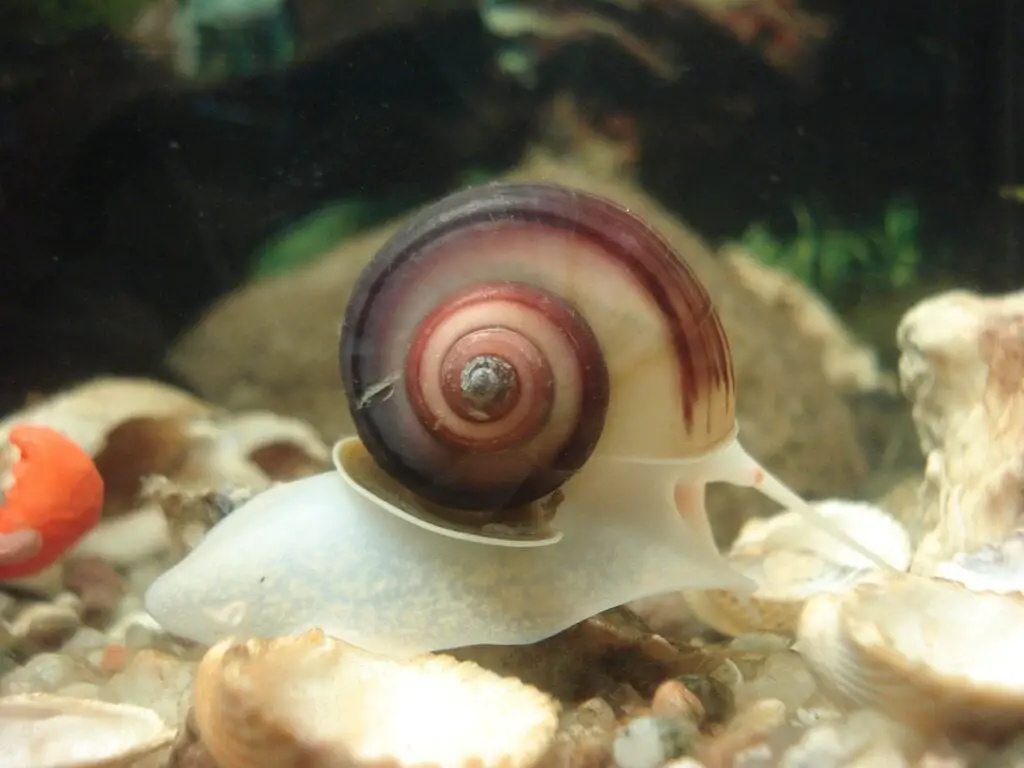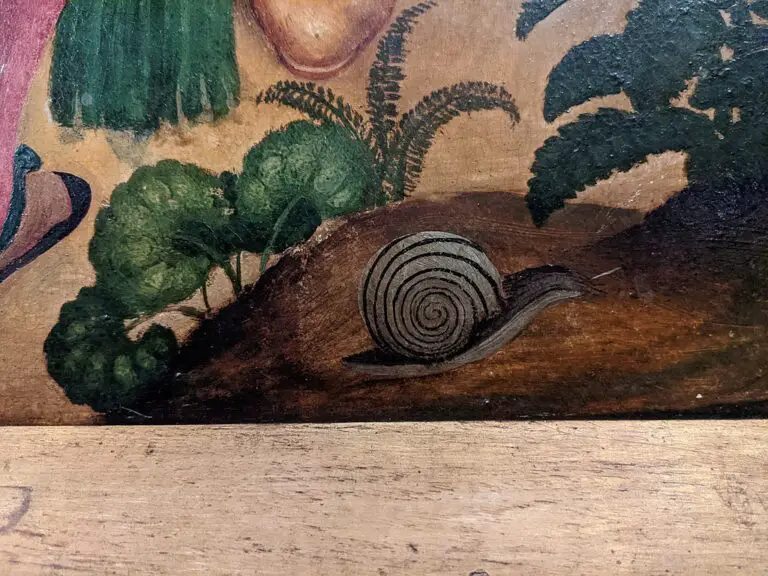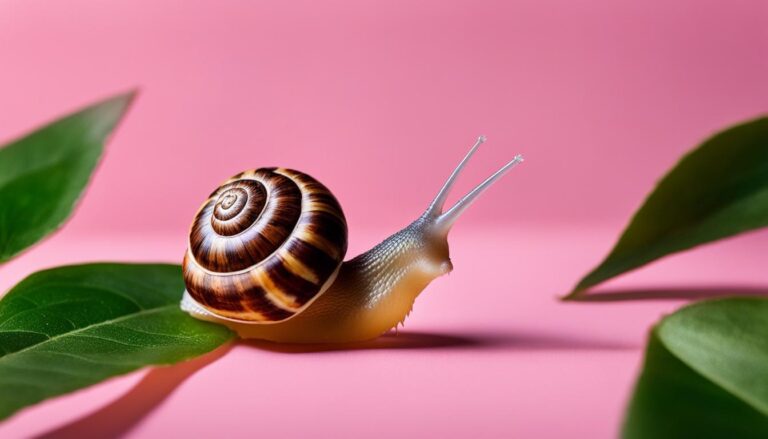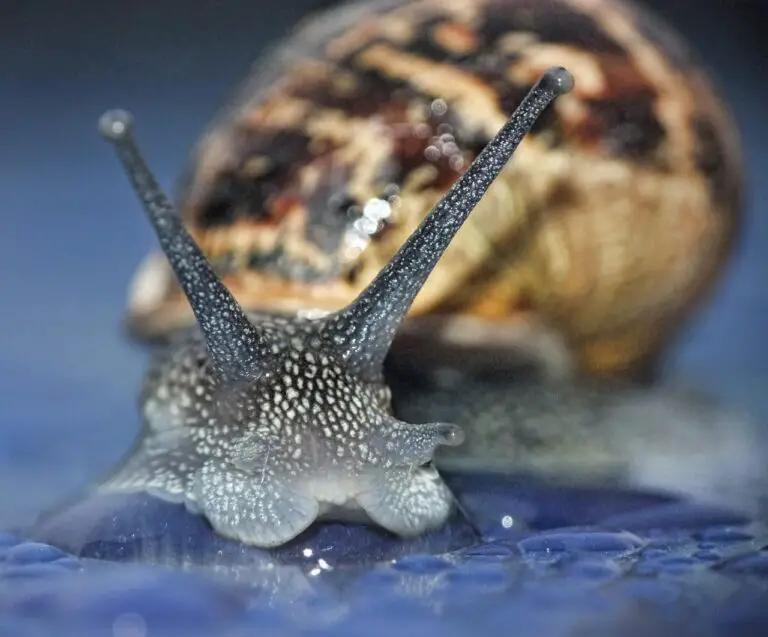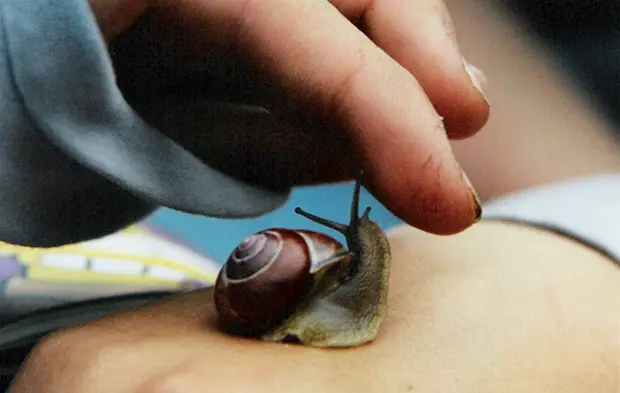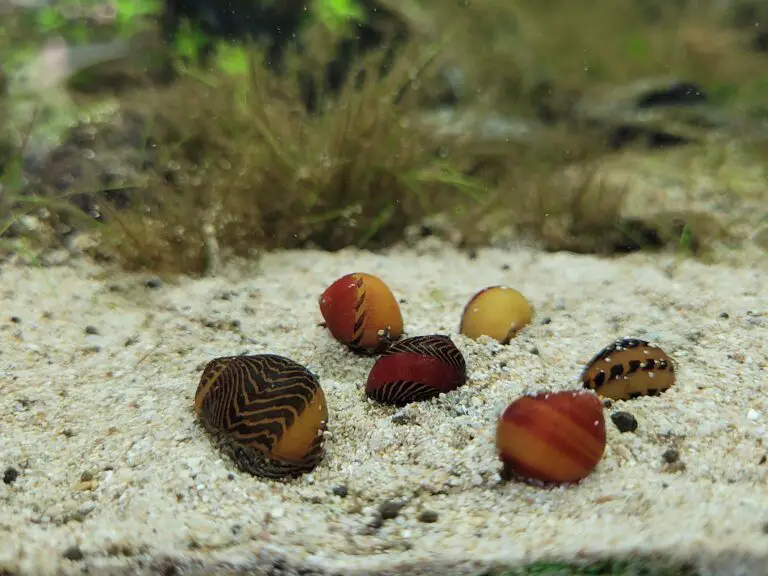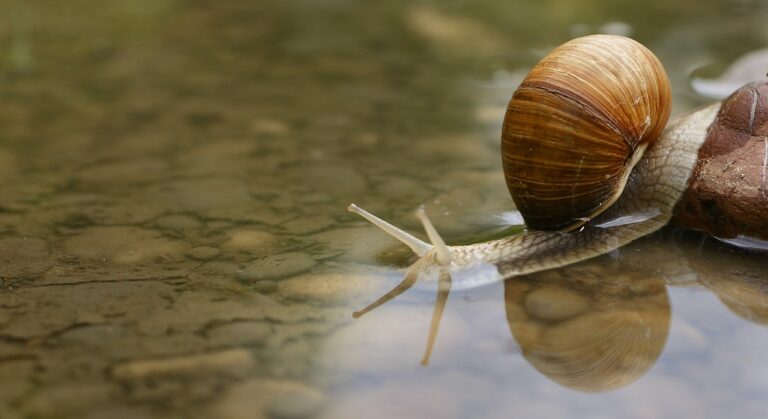Fifty-Five Fast Facts about Slow, Slithering Snails
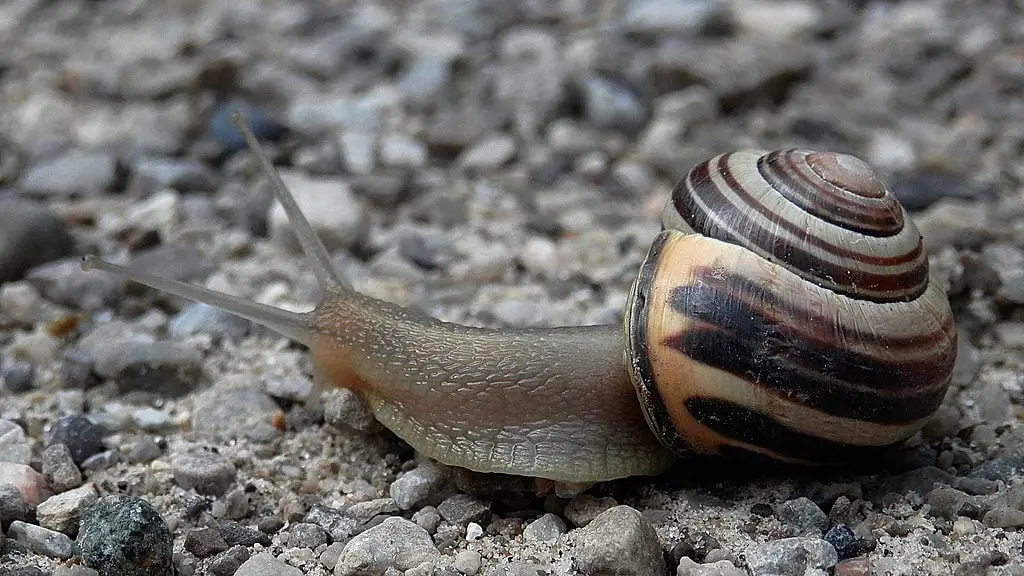
Snails, with their slow pace and spiral shells, are often seen as simple creatures. But there’s more to these gentle mollusks than meets the eye. From their unique biology to their surprising roles in culture and history, snails are full of surprises. In this post, we’re going on a journey into the world of snails, unveiling 55 fascinating facts about these remarkable creatures. So, whether you’re a snail enthusiast or just curious about the natural world, join us as we explore the mysteries of snails. Let’s get started!
Biological and Behavioral
Anatomy and Physiology
1. Snails Have Thousands of Tiny Teeth
That’s right – thousands of teeth! That’s the reality for snails. Their radula, or ribbon-like tongue, is covered in thousands of tiny teeth. These teeth are used to scrape and break down food before it’s consumed. It’s a unique adaptation that allows snails to eat a wide range of foods, from plants to detritus.
2. The Lifespan of a Snail Can Range from a Few Weeks to Several Years
Snails, like other creatures, have varying lifespans depending on their species and environment. Some snails may live only a few weeks, while others can live for several years. Factors such as predation, habitat conditions, and food availability can all impact a snail’s lifespan. But in the right conditions, some snails have been known to live up to 25 years!
3. Snails Can Regenerate Parts of Their Bodies
Snails have an amazing ability to regenerate parts of their bodies. If a snail loses an eye or a tentacle, it can grow a new one, often within a few weeks. This remarkable ability helps them survive in the wild where injuries can occur from predators or environmental hazards.
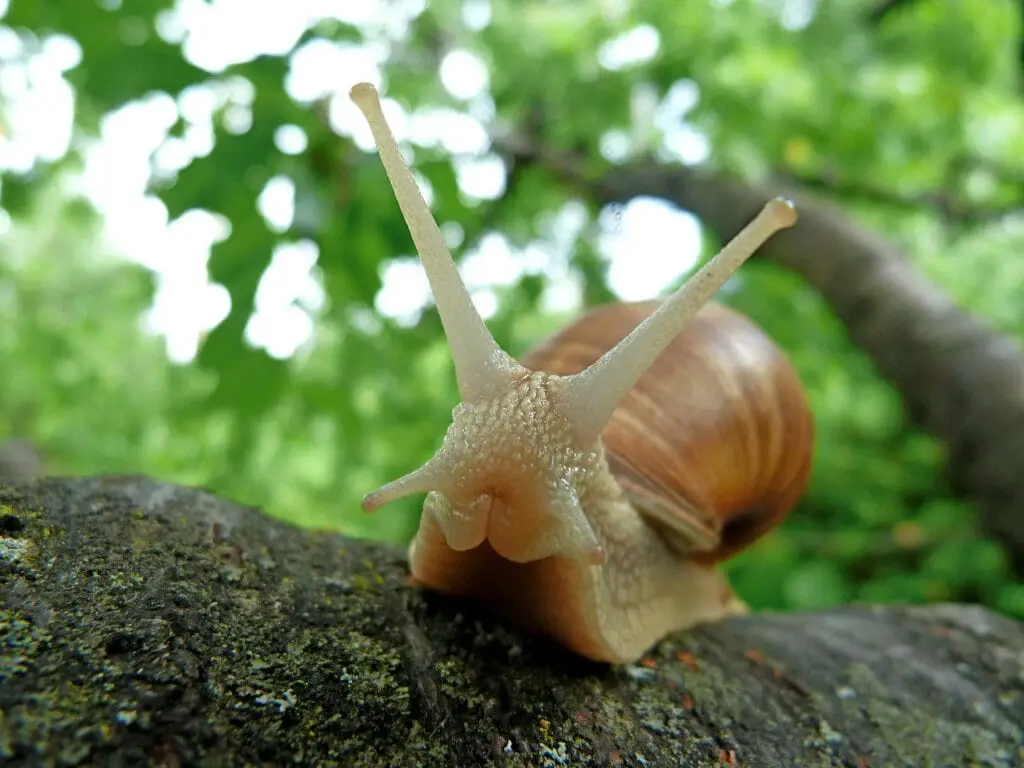
4. Snails Have Poor Eyesight
Snails do have eyes, but their eyesight is generally poor. They rely more on their sense of touch and smell for navigation and finding food. Snails have tentacles that play a crucial role in this sensory experience. The longer pair of tentacles on a snail’s head usually contains the eyes at the tips, while the shorter pair is used for smelling and feeling their way around. This combination of senses allows snails to effectively navigate their environment despite their limited vision.
5. Snails Have a Protective Shell Made of Calcium Carbonate
One of the most distinctive features of a snail is its shell. This protective covering is made of calcium carbonate and grows with the snail throughout its life. The shell provides a safe retreat when the snail feels threatened or when conditions become too dry. It’s a snail’s home and shield all in one!
6. Snails Lay Eggs
Like many other creatures, snails reproduce by laying eggs. Depending on the species, a snail may lay just a few eggs or several hundred at a time. These eggs are usually buried in the soil or hidden in other safe places. After a period of a few weeks or months, the eggs hatch into tiny, fully formed snails. It’s the start of a new snail’s journey!
7. Snails Have a Simple Nervous System
Compared to vertebrates, snails have a relatively simple nervous system. But don’t let that fool you – they’re still capable of learning and memory. Studies have shown that snails can be trained to associate certain stimuli with food, demonstrating a form of learning known as conditioning. So, while they may not be solving puzzles anytime soon, snails are more complex than they might seem.
8. Autotomy
Autotomy is a defense mechanism where a snail can voluntarily detach a part of its body to escape a predator. For example, some sea snails, the Melibe leonina for example, can detach parts of its body as a defensive tactic (ScienceDaily). Additionally, species of land slugs in the genus Prophysaon are known to self-amputate their tails, and the sea snail Oxynoe panamensis exhibits tail autotomy under persistent irritation (Wikipedia).
9. Snails Produce a Slimy Trail as They Move
Ever wondered why snails leave a slimy trail in their wake? This mucus helps them move by reducing friction, allowing them to slide over rough surfaces. It also helps them climb vertical surfaces and even move upside down. But that’s not all – the slime trail also serves as a scent marker, helping snails find their way back home or communicate with other snails.
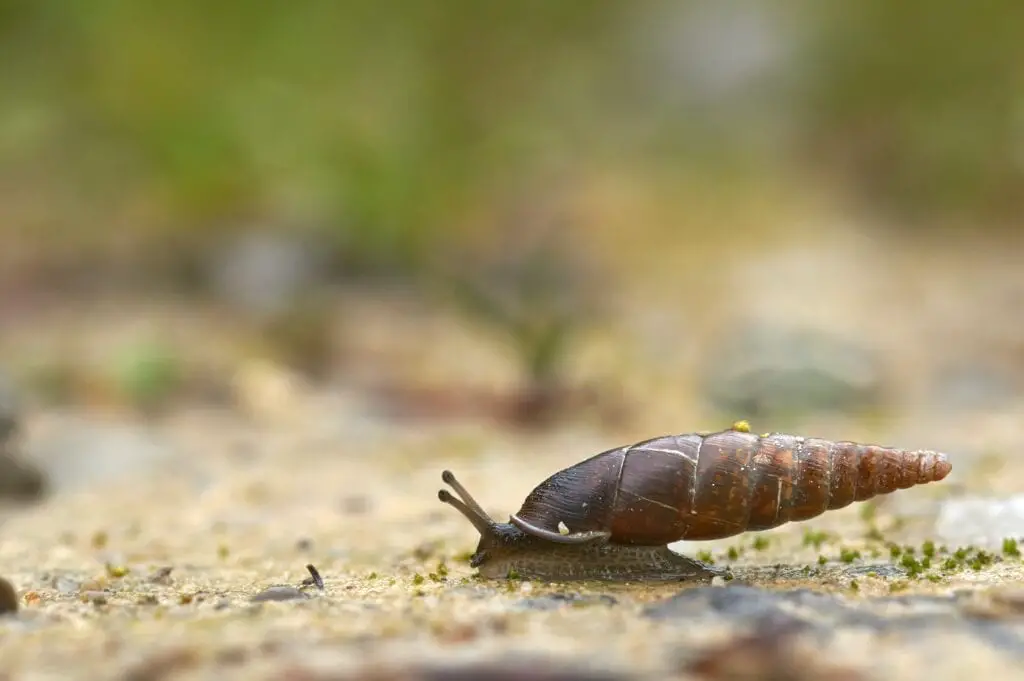
10. Snails Can Repair Their Broken Shells
Life can be tough for a snail, but luckily, they have the ability to repair their broken shells. If a shell gets damaged, the snail can slowly rebuild it using calcium carbonate, the same material the shell is originally made from. It’s a slow process, but it’s a testament to the snail’s resilience and adaptability.
Behavioral Traits
11. Most Snails Are Hermaphrodites
Here’s a fascinating fact about snails: most of them are hermaphrodites. This means they have both male and female reproductive organs. This unique biological feature allows them to mate with any adult of their species they encounter. It’s a clever survival strategy that helps them reproduce efficiently, especially when mates are scarce.
12. Some Snails Can Actually Move at a Speed of 1 Meter per Hour
While snails are notorious for their slow pace, some species can surprise you with their speed. Believe it or not, certain types of snails can actually move at a speed of 1 meter per hour. That’s quite impressive for these little creatures! So, while they won’t be winning any races against a rabbit, they’re not as slow as you might think.
13. Snails Are Mostly Nocturnal
If you’ve ever wondered why you only see snails after a rain or during the early morning, it’s because they’re mostly nocturnal. Snails prefer to come out at night when the temperatures are cooler and the environment is more humid. This helps them avoid dehydration. So, while we’re sleeping, snails are busy exploring and looking for food.
14. Some Snails Are Carnivorous
While many snails are herbivores, feeding on plants and algae, some species have a more carnivorous diet. Carnivorous snails typically feed on other snails, worms, or insect larvae. They use their radula to drill into the shells of other snails or to tear apart their prey. It’s a reminder of the surprising diversity of diets in the snail world. Find out more about the diverse diets of snails, including carnivorous species.
15. Snails Communicate Using Pheromones
Snails may not be able to talk or sing, but they do have their own way of communicating. They use pheromones, chemical signals that can influence the behavior of other snails. These pheromones can help snails find each other for mating, warn each other of danger, or even lay a trail to food. It’s a silent but effective way of communication in the snail world.
16. Some Snails Can Hibernate During the Winter
When winter arrives and the weather gets cold, some snails go into hibernation. They retreat into their shell and seal the entrance with a layer of mucus that hardens to form a protective door called an epiphragm. Inside their shell, the snail slows its metabolism down to a crawl, allowing it to survive for months without food or water until the weather warms up again.
17. Snails Can Sleep for Up to Three Years
Snails are known for their slow pace, but did you know they’re also champion sleepers? Some species of snails can sleep for up to three years! This extended sleep, known as hibernation or estivation, allows them to survive periods of extreme cold or dryness. So, if you thought your last nap was long, just imagine sleeping for years!
18. When a Snail is Threatened, It Can Retreat into Its Shell for Protection
When danger looms, snails have a handy escape plan – they retreat into their shells. This behavior provides them with a level of protection against predators and harsh environmental conditions. So, the next time you see a snail tucked up inside its shell, it’s likely taking a break or hiding from a potential threat.
19. Snails Are Mostly Silent
Snails lead a quiet life. They don’t make sounds like many animals do. Instead, they quietly go about their business, eating, exploring, and sliding along in their slow, steady way. So, if you’re looking for a peaceful pet or a quiet moment in nature, spending some time watching snails could be just the thing.
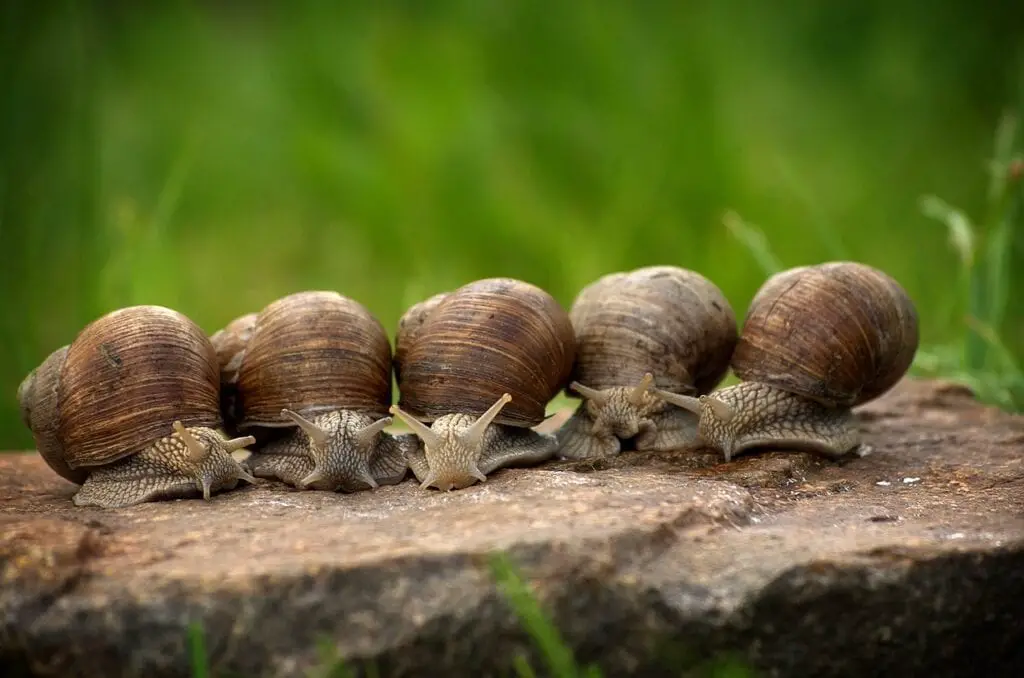
20. Snails Can Eat a Wide Variety of Foods
Snails are not picky eaters. They eat a wide variety of foods, feeding on a mix of plant materials and, in some cases, small animals. Herbivorous snails munch on leaves, fruits, vegetables, and flowers, using their radula to scrape food off surfaces. Omnivorous snails, on the other hand, also consume insects and fungi, deriving protein from these sources. Their ability to feed on decaying matter makes them vital decomposers in ecosystems.
21. Snails Can Move in Any Direction
Snails are not just slow movers; they’re also versatile movers. Thanks to their muscular foot and slimy mucus, snails can move in any direction. They can slide forward, backward, sideways, and even upside down. This ability to move in any direction helps them navigate their environment and find food and shelter.
22. Snails Can Survive in Extreme Conditions
Snails are survivors. They can live in a variety of environments, from hot, dry deserts to cold, snowy mountains. When conditions get tough, snails can go into a state of dormancy, slowing their metabolism and conserving resources until conditions improve. This ability to survive in extreme conditions is one of the reasons why snails are found all over the world.
23. Snails Can Be Active at Any Time of Day or Night
Snails don’t follow a strict day-night schedule. They can be active at any time of day or night, depending on the temperature and humidity. Many snails are more active at night or during damp, cloudy weather, as these conditions help prevent them from drying out. So, if you’re out for a late-night stroll or a walk on a rainy day, keep an eye out for snails on the move.
24. Snails Can Climb Vertical Surfaces
Thanks to their muscular foot and the mucus they produce, snails can climb vertical surfaces with ease. They can be found scaling walls, trees, and even glass windows. This ability allows them to reach food sources, escape predators, and explore their environment in ways that many other creatures can’t.
25. Snails Can Be Both Beneficial and Harmful to Gardens
Snails have a complex relationship with gardens. On one hand, they can be beneficial, helping to break down organic matter and recycle nutrients in the soil. On the other hand, they can also be harmful, feeding on plants and potentially causing damage. If you’re a gardener, it’s important to find a balance that allows you to benefit from the positive aspects of snails while minimizing their potential harm.
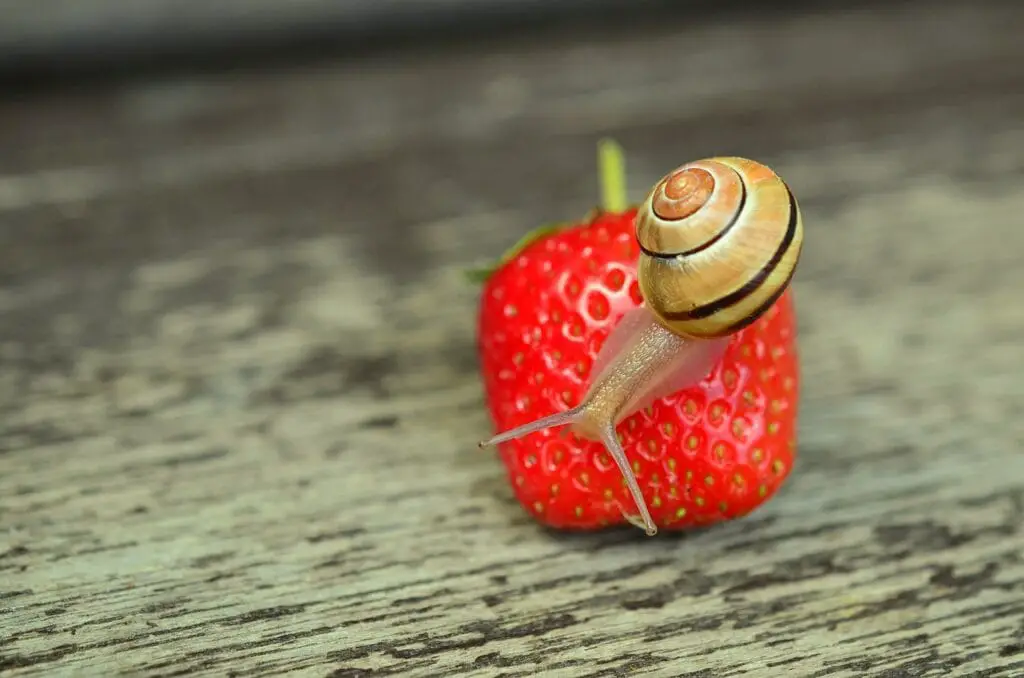
Human Interaction and Cultural Significance
Culture
26. Snails Are Consumed as Delicacies Around the World
Snails aren’t just interesting creatures; they’re also a source of food for many cultures around the world. From the famous French dish escargot to various Asian cuisines, snails are enjoyed for their unique taste and texture. However, it’s important to note that not all snails are edible, and they must be cooked properly to ensure they’re safe to eat.
27. Many People Keep Snails as Low-Maintenance Pets
Believe it or not, some people keep snails as pets! Snails are low maintenance, quiet, and can be quite fascinating to watch. Plus, they’re great for teaching kids about nature and responsibility. Whether it’s a small garden snail or a larger species like the African land snail, these creatures can make unique and interesting pets.
28. Snails Feature in a Variety of Board and Video Games
Snails have even made their way into the world of games. From board games like ‘Snail’s Pace Race’ to the video game ‘Adventure Snail,’ snails often appear as characters or elements in gameplay. Their unique characteristics make them interesting and fun additions to many types of games, often leverage the snail’s slow but steady nature, transforming it into a fun and engaging gameplay element. Such representations in games not only entertain but also shine a light on the intriguing features of these slow-moving creatures.
29. Snail Shells are Utilized in Fashion and Jewelry
Snail shells, with their beautiful patterns and colors, have been used in jewelry and accessories. In some cultures, snail shells are also used in traditional clothing and ceremonial attire. So, the next time you see a snail, remember, it’s not just a creature, it’s a fashion icon!
30. Shells have been used as musical instruments for centuries
The conch, also known as a seashell horn or shell trumpet, is a wind instrument made from the shell of several different kinds of sea snails. These shells have a natural conical bore that is utilized to produce musical tones. Expert musicians, like American jazz musician and trombonist Steve Turre, who is an expert conch trumpet player, can produce a wide range of sounds from these shells, despite their lack of keys or valves.
31. Snails in sports? Absolutely! Meet Snail Racing
Snail racing is a unique and entertaining activity where garden snails compete to see which one can cross a finish line first. Typically, the race takes place on a flat surface with a circular track. The snails start from the center and race to the perimeter, showcasing their slow yet determined nature. The appeal of snail racing lies in its humorous and leisurely pace, making it a charming and unusual form of entertainment.
32. Snail Shells Were Once Used as a Form of Currency
First used as money around 1200 BCE, the shell of the marine snail Cypraea moneta (Cowrie shells) were chosen due to their uniform size, small nature, and durability, which made them a practical option for trade and transactions in various parts of Asia, Africa, and Oceania. Incredibly, cowrie shells continued to serve as a currency in some regions of the world until the 19th and 20th centuries. Furthermore, the land snail Achatina monetaria also had its shells used as currency in Benguella, Portuguese West Africa, which were fashioned into circular coins with an open center.
33. Snails are a Valuable Educational Tool in Classrooms
Snails are excellent educational tools. Their slow pace, visible behaviors, and easy care requirements make them ideal for classroom settings. Students can observe snail behaviors, learn about their biology, and even conduct simple experiments. So, the next time you see a snail, remember, it’s not just a creature, it’s a teacher.
34. Crafts and Art Projects Frequently Use Snail Shells
Snails are not just creatures; they’re also a source of inspiration for crafts. Their shells, in particular, can be used to make a variety of decorative items, from mosaics, pendants, beads, and other decorative items, showcasing their natural beauty.
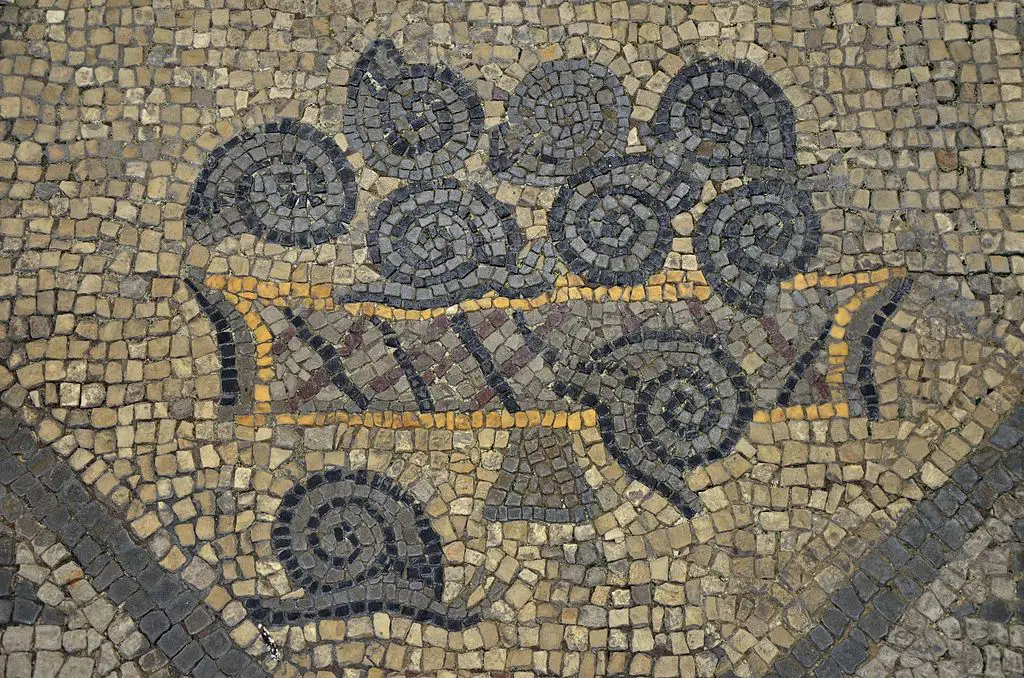
35. Snails Have Inspired Sculptors and Artists
Snails have inspired artists for centuries, and their influence can be seen in sculpture. Their spiral shells and unique forms have been depicted in a variety of materials, from stone and metal to glass and ceramics. So, the next time you see a sculpture featuring a snail, remember, it’s not just a piece of art, it’s a celebration of these fascinating creatures.
36. In Literature, Snails Often Symbolize Patience and Steadiness
Snails have a rich history in literature and symbolism, frequently appearing in fables, fairy tales, and children’s stories. They are often used to represent qualities like patience, determination, and the concept of slow but steady progress. Additionally, in various cultures, snails symbolize fertility and the cycle of rebirth. From the timeless lessons in Aesop’s fables to the pages of contemporary children’s books, snails continue to capture our imagination, reminding us of these deep and enduring themes.
37. Snail Blood Can Be Sacred!
In Jewish tradition, the snail plays a sacred role through the Tekhelet dye, a vibrant blue hue of spiritual significance. Historically believed to be derived from the Hilazon sea creature, now identified as the Hexaplex trunculus snail, this dye adorned the High Priest’s garments and the Tabernacle’s tapestries. Tekhelet’s lore includes tales of its rare appearance, surfacing only once every 70 years. Today, it’s used in the tallit, a religious garment, symbolizing the enduring mystery and cultural importance of this unique snail-derived color.
Science
38. Snails Serve as Important Subjects in Scientific Research
Due to their simple nervous systems and observable behaviors, snails have become a popular subject in scientific research. Studies involving snails have contributed to our understanding of memory, learning, and the effects of certain substances on the nervous system. So, these humble creatures are helping us unlock the secrets of the brain!
39. Snail Mucin is a Popular Ingredient in Skincare Products
Snail slime, also known as snail mucin, is believed to have healing and anti-aging properties. It’s used in a variety of skincare products, from creams to serums. So, the next time you see a snail, remember, it’s not just a creature, it’s a skincare superstar! Discover the full range of benefits and uses of snail mucin in our comprehensive guide.
40. Some Snails Can Be Harmful or Even Deadly to Humans
While most snails are harmless, some can be harmful or even deadly to humans. Certain species of cone snails, for example, have a venomous sting that can be fatal. Other snails can carry parasites that cause diseases like schistosomiasis. So, while snails are generally safe to handle, it’s always a good idea to be cautious and wash your hands afterwards.
41. Snails Help Monitor Environmental Health and Pollution
Snails are useful for environmental monitoring because they’re sensitive to changes in their environment and can provide early warning signs of pollution or other environmental problems. Scientists often study snails to learn more about the health of ecosystems and the impacts of human activities.
42. Snail Slime has Historical Use in Traditional Medicines
Snails have been used in traditional medicine in many cultures. Their slime, for example, has been used to treat wounds, inflammation, and other health problems. While the effectiveness of these treatments is still being studied, it’s clear that snails have a long history of use in medicine.
Diversity and Distribution
43. Snails Are Mollusks
Snails are part of a larger family of animals known as mollusks. This diverse group also includes creatures like clams, octopuses, and even the giant squid. Mollusks are known for their soft bodies and, in many cases, hard shells for protection. So, while a snail may seem quite different from an octopus at first glance, they’re actually distant cousins!
44. Snails Can Be Found in Different Sizes
Snails come in all shapes and sizes. The smallest snails are just a few millimeters long, while the largest, the giant African land snail, can grow up to 30 cm in length. This diversity in size is a testament to the adaptability and diversity of snails as a group. So, whether you’re looking at a tiny garden snail or a giant African snail, remember, they’re all part of the same fascinating family.

45. The Largest Land Snail is the Giant African Snail
Meet the giant African snail, the largest land snail in the world. These impressive creatures can reach up to 7.8 inches in length. That’s about the size of an average adult’s hand! They’re known for their brown, stripy shells and their voracious appetites. So, if you ever come across one of these giants, you’re sure to be in for a memorable encounter.
46. There are over 150,000 species of gastropods
That’s right, this group, which includes our friendly garden snails and their close relatives, the slugs, is incredibly diverse. From the tiniest snails barely visible to the naked eye to the giant African land snail, gastropods come in all shapes and sizes. They inhabit every corner of the world, from the deepest oceans to the highest mountains, and have adapted to survive in a wide range of environments. So next time you see a snail, remember, it’s just one of a vast and varied family of remarkable creatures.
47. Snails Are an Important Part of the Food Chain
Snails play a crucial role in the food chain. They serve as a food source for a variety of animals, including birds, mammals, and other invertebrates. By consuming plant material and breaking it down into nutrients that can be used by other organisms, snails also contribute to the nutrient cycle. So, while they may be small, their impact on the ecosystem is significant.
48. Snails Have Been Around for Over 600 Million Years
Snails have a long history on Earth. Fossil evidence suggests that they’ve been around for over 600 million years. That’s long before the dinosaurs roamed the planet! Over this vast span of time, snails have evolved and adapted to a wide range of environments, making them one of the most successful creatures on Earth.
49. Snails Can Be Found on Every Continent Except Antarctica
Snails are true globetrotters! They’ve managed to colonize every continent on Earth, except for Antarctica. From the humid rainforests of South America to the arid deserts of Africa, snails have adapted to thrive in a wide range of environments. So whether you’re in the bustling heart of a city or the quiet solitude of the countryside, there’s a good chance a snail isn’t too far away.
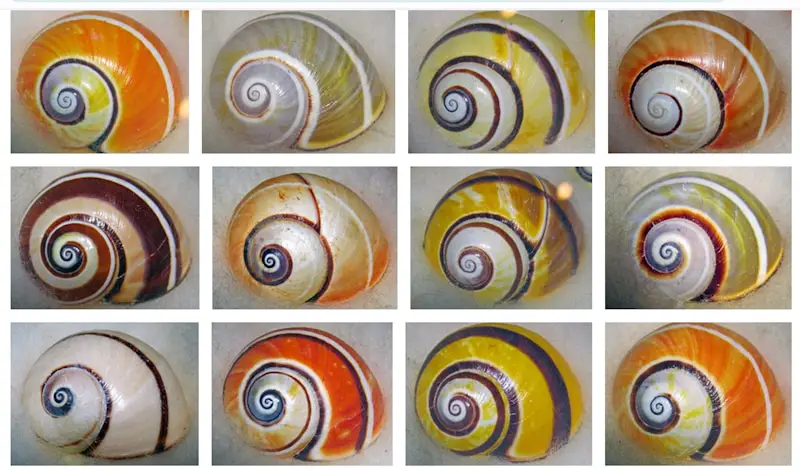
50. Snails Come in a Rainbow of Colors
Snails are not just brown or grey; they come in a variety of colors! Depending on the species, you can find snails in shades of yellow, pink, blue, and even bright red. These colors often serve as camouflage, helping snails blend in with their environment and avoid predators. So, if you take a close look, you might be surprised by the rainbow of snails out there!
51. Snails Can Live in a Variety of Habitats
Snails are incredibly adaptable creatures. They can be found in diverse habitats, including deserts, mountains, forests, and bodies of water. Each species has its own specific requirements for survival, but many are remarkably resilient and can tolerate a range of conditions. So, from the sandy dunes of a desert to the murky depths of a freshwater pond, snails make themselves at home.
52. Snails Play a Role in the Ecosystem by Decomposing Dead Plant Material
Snails are nature’s little recyclers. They play a crucial role in the ecosystem by decomposing dead plant material and turning it into nutrient-rich soil. By doing so, they help to maintain soil fertility and promote plant growth. So, while they may be small, their impact on the health of our ecosystems is huge.
53. Some Species of Snails Are Endangered
Like many creatures on our planet, some species of snails are facing the threat of extinction. Habitat loss, pollution, and climate change are some of the challenges they face. Conservation efforts are underway to protect these endangered species and their habitats. Every snail species plays a unique role in its ecosystem, and losing even one can have far-reaching effects.
54. Snails Thrive from Lowlands to Mountain Tops
From sea level to high up in the mountains, snails can be found at a wide range of altitudes. They’ve adapted to survive in a variety of environments, from hot, humid lowlands to cool, dry mountaintops. So, whether you’re at the beach or on a mountain hike, keep an eye out for these adaptable creatures.
55. Snails Can Live in Both Freshwater and Saltwater Environments
Snails are incredibly adaptable creatures. They can be found in a variety of environments, including both freshwater and saltwater habitats. From rivers and lakes to oceans and estuaries, snails have evolved to survive in a wide range of water conditions. So, whether you’re exploring a mountain stream or a coastal tide pool, you might just find a snail making itself at home.
